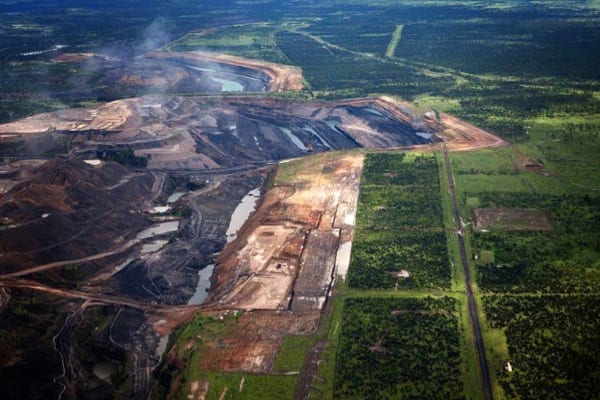The year is 2050. Australia and most of the world have reduced their carbon emissions to zero.
Returning from the Shanghai climate conference on her bio-fuelled jet, Prime Minister Bindi Irwin flies over the partially flooded Gold Coast before heading inland to Canberra.
While the worst effects of climate change predicted back in 2015 seem to have been avoided, Ms Irwin flies over the Hunter Valley, where huge black voids mark the legacy of Australia’s coal mines and coal fired power stations.

Reducing emissions through the 2020’s turned out to be surprisingly easy as renewable energy became ever cheaper and better distributed. Much harder for Australian politicians has been the 30 year battle between states, federal governments and local community groups over who should pay for the clean up that Australia’s now-defunct coal industry left behind.
She sighs. It didn’t have to be this way. Historians have recently rediscovered The Australia Institute’s December 2015 report Two Birds, One Little Black Rock, which foresaw the need to not only close down Australia’s coal-fired power stations, but also to address the issue of site rehabilitation and how to pay for it.
And now back to 2015.
Rehabilitating coal fired power station sites and mines is an expensive business. The 2015 Hazelwood mine fire inquiry found that site faced expenses of over $100 million dollars, but that only $15 million had been put aside for rehabilitation. The Sustainable Minerals Institute estimates that rehabilitation bonds held by governments as little as 10 percent of rehabilitation costs. Taxpayers are facing huge potential liabilities unless funds are put aside to cover these costs.
Worse still, it is the existence of these huge, unfunded rehabilitation liabilities that provides an incentive for end-of-life power stations and mines to keep operating. The longer they can avoid that cost, the better it is from a financial perspective.
Providing incentive to close could be done in two main ways – make them pay for their carbon emissions, or simply pay them to close. Neither seems politically likely for the foreseeable future.
Another solution, proposed in the report, is to introduce a site remediation levy on each tonne of coal produced in Australia. Based on last year’s coal production such a levy of $0.50 per tonne would have generated over $200 million.
The revenue collected from the site remediation levy should be directed into a fund to contribute to remediating power station sites. The funds should be distributed through a reverse auction, where generators compete as to which would accept the smallest rehabilitation subsidy to exit the industry. The auction should continue until the funds for each region have been spent or a suitable amount of coal fired generation capacity has been retired that does not risk electricity supply.
When choosing the successful bidder in the reverse auction the government should consider a number of criteria. This includes stability of supply, cost per MW of retired electricity, the age of the power station and cost per tonne of abatement. This will ensure that the government gets value for money as well targeting older higher emissions power stations.
The benefits of such a scheme are clear – taxpayers avoid paying for unfunded rehabilitation liabilities and our dirtiest power plants are given a way to retire. Beyond this, jobs would be created in rehabilitation, with similar skill sets to the growing numbers of ex-coal miners, assisting with the transition that coal mining areas will have to make.
The costs of the remediation levy would be minimal to most of us. While some may be passed on through electricity prices, given that generation costs are only around one third of retail prices, current abundant supply and the small size of the levy, any increase in retail prices will be small.
There will no doubt be hisses from the coal industry. However, if previous and current mine owners had made adequate provisions for site remediation, such a levy would not be necessary.
Furthermore, despite the current coal price and recent reductions in demand from China, the Australian coal industry remains keen to significantly increase coal exports via large new mines in New South Wales and Queensland. The scale of these proposed new coal mines is such that, if they were to begin exporting, they would push the world price of coal down by significantly more than $0.50. Put simply, if the coal industry is threatened by the introduction of a modest levy then it should be far more concerned with their own industry’s plans to increase Australian exports of coal by up to 100% in the coming decade.
As Prime Minister Irwin’s plane approaches Canberra, she looks down on the Lake George wind farms and wonders why previous governments didn’t listen more closely to those like The Australia Institute who identified the impending problem of retired coal. Maybe, she thinks, she should have Campbell and Denniss taken out of cryogenic storage and thawed out for some advice on how to deal with her current problems funding legacy mine rehabilitation.
Rod Campbell is Director of Research, The Australia Institute










